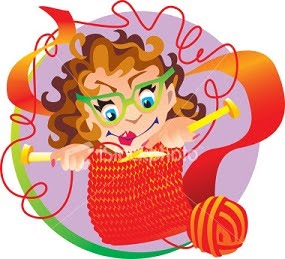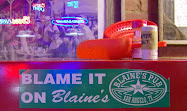Being in the Machine Quilting Business has given me many opportunities to deal with Vintage Quilt Tops and their owners, who often have their grandmothers tops or they have purchased them at estate sales and antique shops. There are many of us who love the 1930's to 1960's quilts and fabrics, and some of us who specialize in making them a finished quilt.
So, if you have a Vintage Quilt Top and are wondering how it should be finished or if it should be finished, here are a few guidelines to consider.
1...Are the fabrics in good enough condition that they can be gently tugged on without tearing. Many old tops that have been stored in cedar chests or plastic will rot and stain due to the chemicals released by the wood and polyurethane.
2...Are the fabrics mostly cotton. Many old tops will have a variety of fabrics besides cotton...ie..silk, linen, denim, etc. that have a tendency to ravel away at the seam or deteriorate from age or strong dye processes. Red, black and indigo are the ones to watch for rot and dye run.

3...Are the seams and stitching secure enough for mounting on the machine. Gentle tugging without coming apart, and the top lays relatively flat. Piecing that has puckers and puffs will result in overlaps and tucks.
4...Does the quality of the Piecing (craftsmanship) and the Pattern...ie..Applique or Intricate Piecing Design vs Scrap Pattern...merit HandQuilting vs Machine Quilting.
5...Does the top merit the expense of finishing either for sentimental or other reasons, and what kind of use is planned for the top once it is quilted.
Many Vintage Tops loose value when they are machine quilted. This depends on meeting the 1-5 criteria and the historical significance of the top. Let's say for the purpose of getting on with the Machine Quilting that your Top is much like the 1930's String Quilt pictured here. It meets the requirements for Machine Quilting. It was purchased at an estate sale, is hand pieced in a very scrappy string pattern, is relatively flat and square. Let's get it Quilted.

Step 1...Backing...
select a New Print fabric that reflects the time period and theme of the quilt. For this one the Red small scale floral works perfect as the thread color will blend on both the top and the back and there are many small scale florals within the top. The New Fabric will add much stability to the old top as will the New Fabric for the binding...the blue floral for this top.
Step 2...Look over the top on the Right Side to check for raveled or coming apart seams. Repair as many as you can find...the one's you miss will repaired as you quilt or after the quilt is washed. Do Not wash top before quilting. Many a stained and dirty quilt has been quilted on my machine. They will tolerate a washing much better after the stablizing of the quilting.
Step 3...Check the top for Square. Most old tops will be out of square with frayed or ragged edges. Fold in half with the fold being straight and square (not by the corner edges). Fold in half again (now quartered) with the the two folds being square. If the edges are within an inch or two of being the same leave them alone. If they are more than two inches use a rotary cutter and ruler to even them enough to mount on the machine, but not to a finished square. That will be done after the quilting.
Now, we are ready to 'Mount' the Top on the Quilting Machine.
Let's TakeABreak and Tour the Quilting Studio and meet QuiltALotty!
Click HERE for the Tour!
PS...The 'Mounting and Starting' Tutorial is under construction. If you would like to be notified when it is Up and Running, please return to SuKnitWitty, join the Followers and Add SuKnitWitty to your BlogList.
I like to Check the Boxes for:
*Title of Most Recent Item
*Thumbnail of Most Recent Item
*Date of Last Item.
With those Checked you'll be able to SEE the Posting on Your SideBar. 






